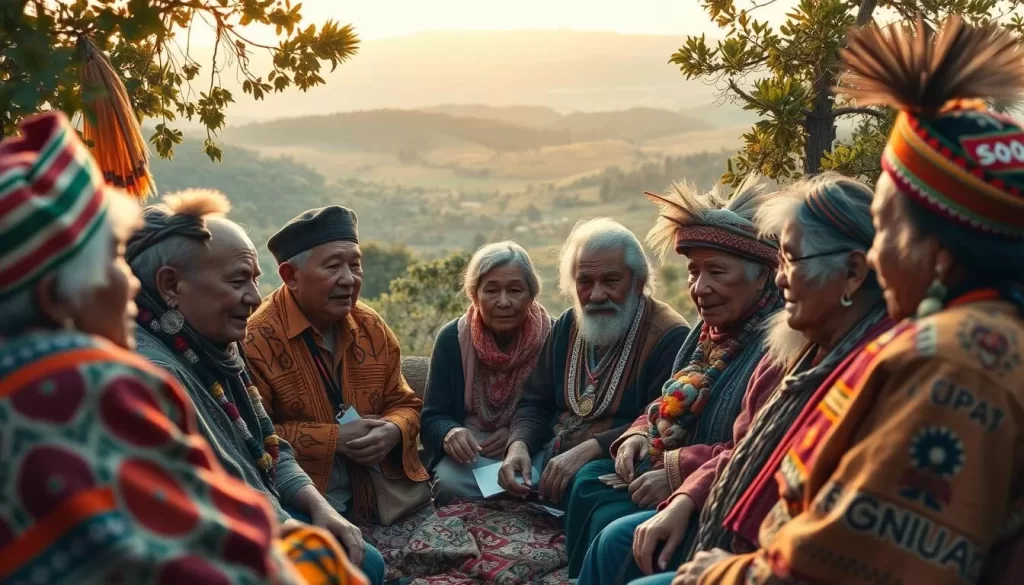Nestled in Southern Africa, this small landlocked country is a fascinating blend of tradition and modernity. With a population of approximately 1.34 million, it’s a place where culture thrives and history speaks volumes.
Here, two official languages—Swazi and English—serve as the foundation of communication. Swazi, spoken by about 95% of the people, is deeply rooted in the nation’s identity. English, on the other hand, plays a key role in education and governance.
Since gaining independence in 1968, the country has preserved its rich heritage while embracing progress. Its dual capitals, Mbabane and Lobamba, reflect a unique blend of administrative and cultural roles.
Whether you’re exploring its diverse climate or engaging with its friendly people, this country offers a captivating experience. Dive in to discover how language shapes its vibrant system and connects its communities.
Overview of Eswatini’s Linguistic Landscape
Eswatini’s linguistic landscape is as diverse as its geography. The country is home to a vibrant mix of languages, each reflecting its unique cultural and historical roots. SiSwati, spoken by about 90% of the population, is the heart of everyday communication. English, on the other hand, is the language of governance, education, and business.
Key Languages and Their Usage
In urban areas, you’ll hear a blend of SiSwati and English, especially in formal settings. Rural regions, however, remain deeply rooted in SiSwati, with fewer English speakers. Indigenous languages like isiZulu and Sesotho also play a role, particularly in the eastern and southern parts of the country.
“Language is not just a tool for communication; it’s a reflection of identity and heritage.”
Geographical and Demographic Context
Eswatini’s geography influences its linguistic diversity. The Highveld, Middleveld, Lowveld, and Lubombo escarpment each have distinct cultural and linguistic traits. With a population of over 1.2 million, 75% of residents live in rural areas, where SiSwati dominates.
| Region | Primary Language | Population Distribution |
|---|---|---|
| Highveld | SiSwati | 30% |
| Middleveld | SiSwati, English | 25% |
| Lowveld | SiSwati, isiZulu | 40% |
| Lubombo | SiSwati, Sesotho | 5% |
Understanding this linguistic diversity helps you appreciate how language shapes life in Eswatini. From bustling cities to quiet villages, it’s a country where tradition and modernity coexist harmoniously.
Historical Background and Colonial Impact
The roots of this nation’s identity trace back to the early days of the Swazi Kingdom. Around 1770, King Ngwane III established the first nucleus of the Swazi nation, laying the foundation for its future growth. By the year 1860, the Dlamini clan had extended their power significantly, shaping the land into a unified territory.

The Formation of the Swazi Kingdom
Under leaders like Ngwane III and Mswati II, the kingdom expanded its borders and influence. Mswati II, who ruled until 1865, inherited a territory that stretched as far as present-day Barberton in the north. This expansion solidified the kingdom’s control over key parts of the region, creating a strong cultural and political identity.
Colonial Era and Language Shifts
The colonial era brought significant changes to the country. The London Convention of 1884 recognized the kingdom’s independence, but European influence soon altered its trajectory. By 1894, the land was placed under the South African Republic as a protectorate, leading to shifts in governance and language.
European settlers introduced English, which began to influence the native language system. This team of external forces reshaped communication, education, and administration. Despite these changes, the Swazi people preserved their cultural heritage, blending tradition with modernity.
| Period | Key Event | Impact |
|---|---|---|
| 1770 | Formation of the Swazi Kingdom | Unified the region under Ngwane III |
| 1884 | London Convention | Recognized independence |
| 1894 | Protectorate Status | Shifted governance and language |
This history of resilience and adaptation highlights how the kingdom evolved under both internal leadership and external pressures. The reference to these events helps us understand the roots of modern language policies and cultural practices.
Swaziland (Eswatini): Official and widely spoken languages
Communication in this Southern African nation is shaped by its bilingual policy. Swazi and English are the foundation of governance, education, and media. This dual-language system reflects the nation’s cultural and administrative identity.
Role of Swazi and English in Government
In government, both Swazi and English are essential. Legislative sessions often use English for formal records, while Swazi connects with the public. This approach ensures clarity and inclusivity in decision-making.
Administrative offices, especially the head of state, rely on bilingual communication. This practice bridges the gap between traditional values and modern governance.
Language Use in Education and Media
Schools prioritize English as the medium of instruction, preparing students for global opportunities. Swazi, however, remains a key part of the curriculum, preserving cultural heritage.
Media outlets broadcast in both languages, reaching a diverse audience. News programs and educational content use this bilingual approach to engage viewers effectively.
“Language is the bridge between tradition and progress, connecting communities across generations.”
| Area | Primary Language | Usage |
|---|---|---|
| Government | English, Swazi | Legislation, Administration |
| School | English | Instruction, Curriculum |
| Media | Swazi, English | Broadcasts, Public Engagement |
This bilingual system ensures that every speaker feels represented. Whether in classrooms or legislative halls, it fosters unity and progress.
Cultural Significance of Native and Minority Languages
Language in this region is more than just words; it’s a gateway to cultural identity. Every phrase and expression carries the essence of traditions passed down through generations. For many residents, native languages are a way to connect with their roots and celebrate their heritage.

Traditions and Linguistic Identity
In this area, language is deeply intertwined with cultural practices. From storytelling to ceremonies, native languages play a vital role in preserving traditions. Families often use these languages to teach values and history, ensuring that younger generations stay connected to their heritage.
For many, speaking a native language is a source of pride. It’s a way to honor ancestors and maintain a unique identity. This connection between language and culture is evident in daily life, from greetings to celebrations.
Preservation of Cultural Heritage
Efforts to preserve minority languages are ongoing. Communities are working to document and teach these languages, ensuring they don’t fade away. Schools and cultural organizations play a key role in these initiatives.
Immigrant influences have also added to the linguistic diversity. These groups bring their own languages and traditions, enriching the cultural tapestry of the region.
“Preserving language is preserving the soul of a culture.”
| Community | Language | Preservation Efforts |
|---|---|---|
| Indigenous Groups | SiSwati | Cultural festivals, language classes |
| Immigrant Communities | Zulu, Sesotho | Community centers, oral history projects |
| Rural Residents | Traditional Dialects | Storytelling, intergenerational teaching |
By celebrating linguistic diversity, residents ensure that every person feels valued. These efforts not only preserve languages but also strengthen the bonds within communities.
Language and Government Communication
Effective communication in governance ensures clarity and inclusivity in public policy. In this nation, language plays a pivotal role in legislative and administrative tasks. Both Swazi and English are used to maintain transparency and uniformity in official functions.
Legislative and Administrative Practices
Legislative sessions often rely on English for formal records, while Swazi connects with the public. This bilingual approach ensures that every person feels represented in the decision-making process.
Administrative offices, especially those under the state, use both languages to bridge traditional values with modern governance. This practice fosters inclusivity and efficiency in public services.
“Clear language practices are the backbone of effective governance.”
Concrete examples from official documents serve as a reference for how language shapes public policy. These documents highlight the importance of a structured system in maintaining clarity and consistency.
| Area | Primary Language | Usage |
|---|---|---|
| Legislation | English | Formal Records |
| Public Engagement | Swazi | Community Communication |
| Administration | English, Swazi | Policy Implementation |
This dual-language system ensures that every person feels included in the governance process. Whether in legislative halls or public offices, it fosters unity and progress.
Influence of Education and Business on Language Proficiency
From classrooms to boardrooms, language proficiency opens doors to opportunities. In this region, schools and workplaces are driving forces behind bilingual fluency. Let’s explore how education and business shape language skills in meaningful ways.

Language Learning in Schools
Schools here prioritize bilingual education to prepare students for success. From the first four grades, SiSwati is the medium of instruction, fostering a strong connection to cultural roots. After this, English takes over, equipping students for global opportunities.
This dual-language approach ensures that every person develops strong communication skills. It also helps maintain a high literacy rate, with both male and female students achieving 89% proficiency.
Impact on the Work Environment
In the workplace, language proficiency is a key asset. Businesses value employees who can communicate effectively in both SiSwati and English. This skill fosters better teamwork and collaboration.
For example, local companies often require bilingual fluency for customer-facing roles. This ensures clear communication and enhances service quality.
“Language skills are the foundation of professional success, bridging gaps between teams and clients.”
| Area | Language Focus | Impact |
|---|---|---|
| School | SiSwati, English | Prepares students for global opportunities |
| Business | Bilingual Communication | Enhances teamwork and customer service |
By investing in language education, this area ensures that every person can thrive in both academic and professional settings. Whether in a classroom or a boardroom, bilingual fluency is a powerful tool for success.
For more insights on the role of language in education, explore this detailed study.
Minority and Immigrant Language Contributions
The vibrant linguistic diversity of this region is enriched by the contributions of minority and immigrant communities. These groups bring unique languages like Afrikaans, Tsonga, and Zulu, adding depth to the nation’s cultural tapestry.
Languages Spoken by Immigrant Communities
Immigrant communities play a significant role in shaping the linguistic landscape. For example, Zulu is spoken by about 76,000 people, while Tsonga has around 19,000 speakers. Afrikaans, with approximately 13,000 speakers, also contributes to this diversity.
These languages are not just tools for communication; they are bridges connecting communities. They help preserve cultural identities while fostering integration into the broader society.
Integration with Mainstream Communication
Minority languages often find their way into mainstream systems. Schools and businesses increasingly recognize the value of bilingualism, encouraging the use of these languages alongside dominant ones.
For instance, many immigrants from South Africa bring linguistic expertise that enhances local communication. This integration strengthens social bonds and promotes mutual understanding.
“Language is the thread that weaves communities together, creating a vibrant cultural fabric.”
To learn more about how language shapes history, explore the political history of Swaziland.
Modern Developments in Language Policy and Media
Modern developments are reshaping how language is used in governance and media. Recent reforms have brought significant changes to the way communication is structured in this country. These adjustments aim to make language more inclusive and effective in public discourse.

Recent Changes and Policy Reforms
In the past few years, the government has introduced policies to promote bilingualism. For example, educational reforms now emphasize teaching both SiSwati and English from an early age. This approach ensures students are proficient in both languages by the time they reach secondary school.
Media outlets have also adapted to these changes. News programs and public announcements are increasingly bilingual, reaching a wider audience. This shift reflects the growing importance of inclusivity in communication.
“Language is the bridge that connects tradition with progress, ensuring no one is left behind.”
These reforms are part of a broader trend seen around the world. Many nations are recognizing the value of preserving native languages while embracing global communication standards.
For more insights into the evolution of language policy, explore this detailed study on the historical context of language reforms.
How Eswatini’s Linguistic Diversity Shapes Society
Language diversity in this region is a cornerstone of unity and cultural pride. It brings people together, fostering a sense of belonging and shared identity. This rich tapestry of languages strengthens social bonds and enhances the quality of life for everyone.
Social Cohesion and Identity
In this area, language is more than just a way to communicate. It’s a bridge that connects individuals and communities. Whether you’re speaking with a neighbor or attending a community event, language plays a vital role in building trust and understanding.
For many families, language is a source of pride and heritage. Parents pass down native dialects to their children, ensuring that traditions remain alive. This practice strengthens family ties and preserves cultural identity.
“Language is the thread that weaves communities together, creating a vibrant cultural fabric.”
Studies show that regions with high linguistic diversity often experience stronger social cohesion. People from different backgrounds come together, sharing their unique perspectives and experiences. This exchange enriches the community and fosters mutual respect.
| Aspect | Impact |
|---|---|
| Community Bonds | Strengthened through shared language |
| Family Unity | Preserved through native dialects |
| Social Status | Enhanced by bilingual proficiency |
Understanding the role of language in society helps you appreciate its value. From daily interactions to cultural celebrations, it’s a driving force for unity and progress. To learn more about how linguistic diversity shapes communities, explore this detailed report.
Conclusion
Language serves as a vital thread weaving together the cultural and social fabric of this nation. From government policies to school curriculums, it plays a central role in shaping daily life. The population relies on it to preserve traditions and foster unity across diverse communities.
Over the years, this country has embraced bilingualism, ensuring that every speaker feels represented. This approach strengthens family bonds and enhances communication in both urban and rural regions.
To learn more about how language influences education, explore this study on its impact in vulnerable communities. Reflect on how language continues to shape identity and progress in this vibrant nation.
The above is subject to change.
Check back often to TRAVEL.COM for the latest travel tips and deals.
Here are some Tours & Sightseeing suggestions that might pique your interests!




